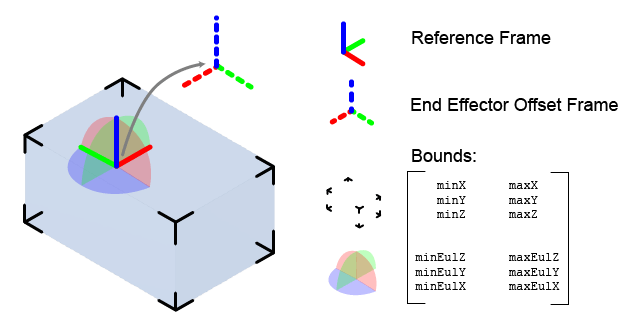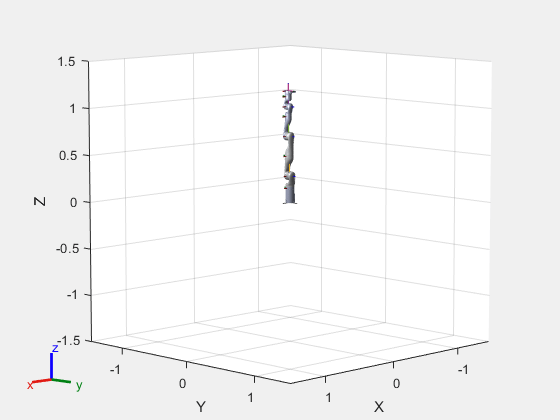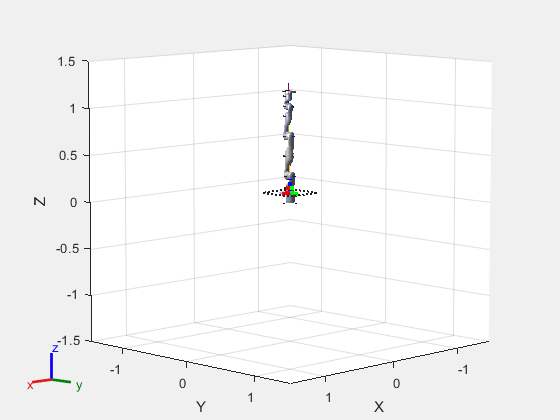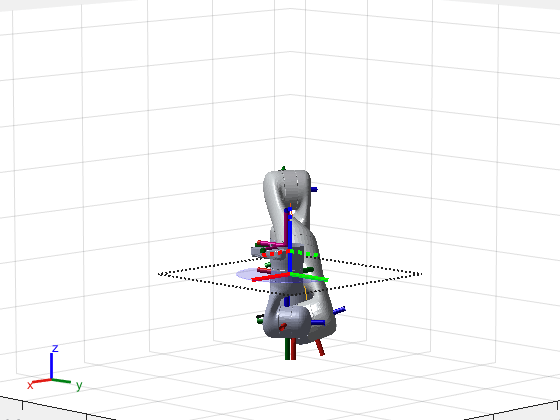workspaceGoalRegion
Description
The workspaceGoalRegion object defines a region for valid
end-effector goal poses. To sample poses within the bounds of the goal region, use the
sample object function. You can also visualize the bounds you define
using the show object function.
The object is typically used with rapidly exploring random tree (RRT) planners like the
manipulatorRRT
object. The sample generates alternative goal states to increase the
likelihood of finding valid paths.

The key elements of the goal region are defined as object properties:
ReferencePose — Pose of the reference frame in the world frame. The bounds and offset pose are relative to this frame.
EndEffectorOffsetPose — Offset pose applied to any pose sampled in the reference frame. Use this offset if the end effector needs to be positioned differently based on grasping or other geometric restrictions.
Bounds — Bounds of the region as a 6-by-2 matrix with the minimum and maximum values for the XYZ-position and ZYX Euler angle orientation, in respective column vectors.
Creation
Syntax
Description
goalRegion = workspaceGoalRegion(EndEffectorName)EndEffectorName property.
goalRegion = workspaceGoalRegion(EndEffectorName,Name,Value)workSpaceGoalRegion("endEffector","Bounds",limits) creates a
workspace goal region with the Bounds property specified as
a matrix.
Properties
Object Functions
Examples
References
[1] Berenson, Dmitry, Siddhartha S. Srinivasa, Dave Ferguson, Alvaro Collet, and James J. Kuffner. "Manipulation Planning with Workspace Goal Regions." In 2009 IEEE International Conference on Robotics and Automation (ICRA), 618–24. Kobe, Japan: Institute of Electrical and Electronics Engineers, 2009. https://doi.org/10.1109/ROBOT.2009.5152401.
Extended Capabilities
Version History
Introduced in R2021a
See Also
manipulatorRRT | sample | show



